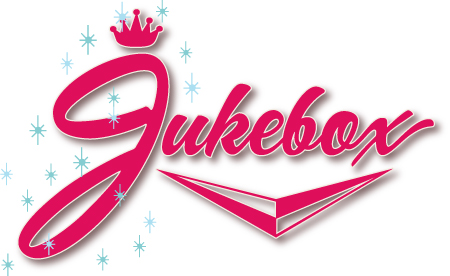FAQ (Frequently Asked Questions)
Here are some common questions asked about fonts and Jukebox:
Q: I just purchased a font from your website, but some of the "fancy" or special characters I saw in the samples don't show up in the font on my computer. What's going on??
A: Never fear! Firstly, please know that I would never advertise something on my website that was misleading. If you purchased a font from me, you are getting exactly what was shown in the samples on my site.
Whenever a font has alternate, swash, ligatures or special characters to substitute for the normal letters, they must be placed in the font as OpenType features. They can't be placed in the standard slots for the normal letters. In order to access them you must be able to use OpenType features in whichever software the font is being used in. Fortunately, the majority of software apps made today have this ability. I found a good webpage here, which explains how to use OpenType features in most common applications. (In rare cases you may not be able to access the OpenType glyphs, in which case please contact me.)
How to Access OpenType Features:
https://medialoot.com/blog/how-to-enable-opentype-features-in-word-photoshop-and-illustrator/
Q: Are Jukebox fonts compatible with my computer?
A: All Jukebox fonts are in OpenType format which is compatible with both Mac and PC. The same font file works on both platforms. Windows users will most likely want to use the file with the .ttf extension.
In order to make full use of OpenType fonts you must have an OpenType savvy application. Fortunately most applications today are OpenType savvy including Microsoft Word. With some simple apps it's possible you will still be able to use the font, but you won't have access to automatic features, such as Swash or ligature substitutions. Those glyphs will have to be put in one at a time from a character chooser tool. While Jukebox fonts are created somewhat with the professional designer in mind, anyone can use them.
Q: What is OpenType, and how do I use it?
A: The OpenType font format is the most recent and versatile format for fonts. There are two kinds of OpenType fonts: PostScript "flavored" (.otf) and TrueType "flavored" (.ttf). While both kinds are compatible on both Mac and PC, the .otf files are considered the professional standard for designers and printing. All Jukebox packages contain both type of files.
OpenType fonts contain programmable "features" that the type designer must code into the font. For example, when using an Italic font with alternate swash letters in a software program such as Adobe Illustrator, with one click, those swashes can be put in automatically from the OpenType Palette. Plus, older font formats were limited to 256 characters (glyphs) requiring multiple font files for alternates and swash sets. OpenType fonts can contain up to 65,000 glyphs allowing designers to put all those features into one font file.
Q: Do the Quantity Discounts apply to different fonts?
A: Yes! Regardless of whether you buy multiple licenses of the same font or one license for multiple fonts, the discount still applies.
Q: Do you offer refunds or exchanges?
A: Due to the digital nature of fonts, I cannot offer refunds or exchanges. However if you have a technical issue with a Jukebox font, I will be more than happy to work with you to correct the problem and get your font working.
Q: When I buy a font from Jukebox, do I own it?
A: No. What you are actually buying is the license to use the font on your computer. You do not own the font itself. A font is a like a mini application that tells the computer how to display and print the letters. Just like you license an application from a software company, you are also licensing a font.
Q: Do you design custom typefaces?
A: Yes! If you are interested in a custom typeface for you or your business, please email me for information or with any questions. A custom font can be a great way to stand out as part of your branding.
Q: What's the difference between a font and a typeface?
A: Technically there is a difference but that difference doesn't matter so much nowadays because fonts are digital. A long time ago when type was made from individual letters cast in metal, each point size had to be made separately. A printer had to have a whole set of say, Caslon in 10pt., a whole set in 12 pt, etc. These different sizes were referred to as "fonts". The design or style of the letters was the "typeface". So Caslon 10pt and Caslon 12pt. are the same typeface but different fonts. With computers, what a designer (like me) really creates is the typeface. The computer scales it automatically to whatever size you want. As a result the terms became less important and nowadays they are used more or less interchangeably.
Q: How long does it take to design a typeface?
A: It depends. I have spent anywhere from two weeks up to a full year creating the fonts in Jukebox. Designing a complete typeface from the ground up is a monumental task, but one that is rewarding and unique. Digital revivals go much faster because the design work is already done. The time spent largely depends on the intended use for the font. Text faces take much longer as they require more meticulous precision than display faces. My favorites to design are the script fonts. They have such a wide range of possibilities, you can get really creative with them. I often have at least three or four typefaces in production at the same time.
Q: Do you offer Jukebox fonts in PostScript Type 1 format?
A: No. PostScript Type 1 is considered a dead format. The OpenType format is greatly superior.
